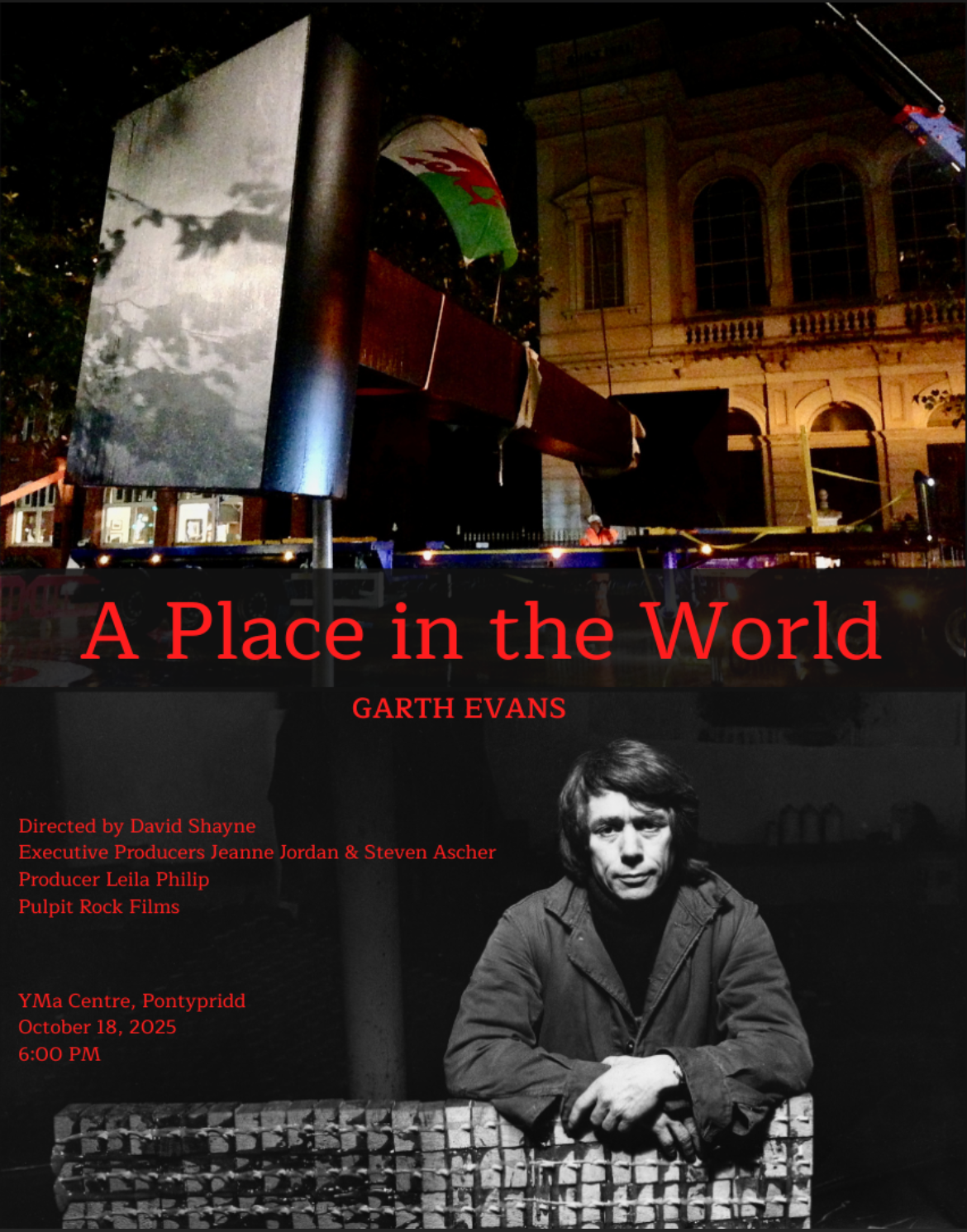A Place in the World explores the career of a visionary artist, Garth Evans though a 60 year arc of restless creativity and surprising turns of fate. Garth’s work is infused with visual and tactile acuity, his social commitment and his uniquely self-deprecating humor. The film takes us from his working-class British childhood to the top of the British art world and his distinguished career in the U.S. In the explosive creativity of the 1970s, he helped develop radical teaching methods that are still studied today. A centerpiece of the film is the astonishing story of an enormous work in steel that Garth installed on the street in Cardiff, Wales in 1972. The people of Cardiff, unaccustomed to abstract art, reacted vociferously. Undaunted, Garth recorded their reactions. The 50 year odyssey of that sculpture involves mystery, surprise and delight and speaks eloquently about the project of making public art. A Place in the World is an opportunity to see the world through Garth’s eyes and the amazing evolution of objects small and large that he’s made with his hands. It’s about the challenge of finding new territories to explore, and the complex conversation between an artist and those who experience the work. Finally, it’s about a deep dedication to creativity and a life well lived.
Produced with support from:
LEF Moving Image Fund, Asbjorn Lunde Foundation, College of the Holy Cross Research Council, 3A Productions, and individual donors.
